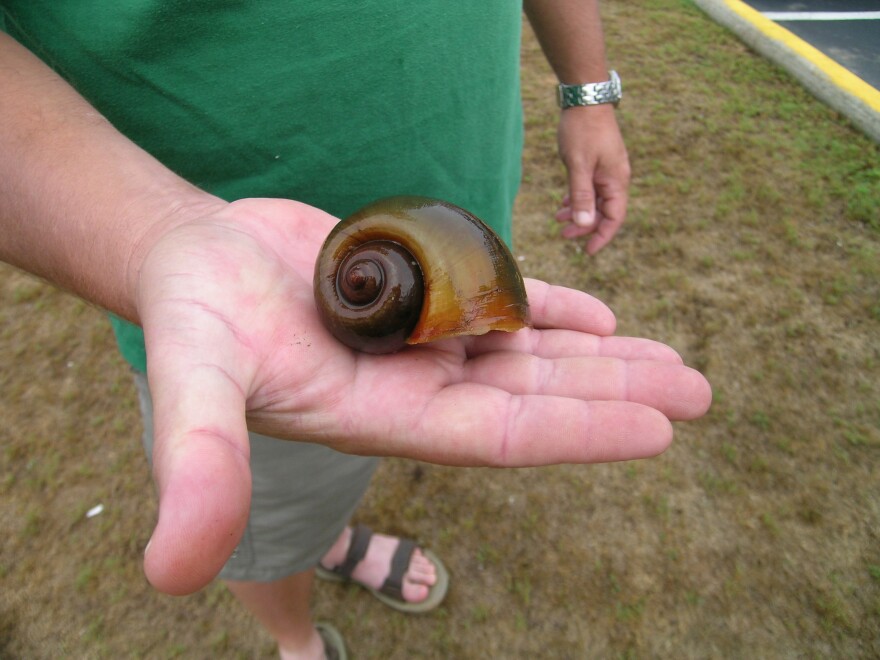As climate change increases global and ocean temperatures, living things are responding by moving into areas they didn’t previously live in. They are called “invasive species” and sautéing, grilling, frying, baking, among other things, are recommended to eradicate them.
In recent years, several invasive species have found their way to North Carolina. Last year, apple snails were found along the Lumber River in Lumberton. Lionfish, originally native to the Indian Ocean, were first spotted in North Carolina waters in the early 2000s. And the Florida Everglades have been overrun by pythons, which can grow up to 18 feet long… and are expected to eventually find their way to the Carolinas.
The concept of “invasive eating” is gaining popularity among some scientists and naturalists, as well as in online cooking videos and books.
There are numerous recipes for dishes such as Southern Fried Python, Burmese Python Nuggets, and Cajun Style Grits and Python. Most people say the snake fillets taste like chicken.
Previous Python coverage — Burmese pythons and their eventual migration to the North Carolina coast
Dr. Mike Cove, research curator of mammalogy at the North Carolina Museum of Natural Sciences, is not so sure that eating the snakes is a good plan for their eradication.
“Apex predators in particular can accumulate many different heavy metals, vitamins or other toxins from the environment or from their prey and accumulate them in such high concentrations that they would be inedible as food for humans like us,” he explained.
However, he recommends eating another invasive species – the lionfish. Cove said the destructive, spiny fish is a delicacy elsewhere and is perfectly safe to eat for those who know how to clean it.
“The fillets are pretty tasty,” he said. “You just have to be a little clever to avoid the poisonous spines when you cut off the fins. But they’re actually pretty tasty and are on a lot of menus in the Caribbean and South Florida.”
Lionfish are voracious feeders with no natural predators in the Atlantic Ocean. They eat all the juvenile fish and crustaceans that commercial fishermen and local restaurants in eastern North Carolina depend on.

Previous coverage of lionfish — Underwater fishing tournament targets invasive fish species
North Carolina has the seventh-largest feral hog problem in the U.S., with sightings in 85 counties. Cove says this is another invasive species that could be served up as a tasty barbecue snack.
“You know, wild boars are just an extension of domestic pigs, and in many cases their meat can be quite tasty. Hunting them could help control the growth of their population,” Cove said.
And a pesky species could be added to the weekly menu … for people with a strong constitution. Cove said, “I’m not so sure we can convince people in North Carolina or people in the United States that we should cook the mice in our garage, but a large portion of the world’s population eats rats.” He added, “That’s not to say that the non-native house rats – the two species we have here in North Carolina, brown rats – are necessarily tasty, but they actually have quite a lot of meat, considering they can be about the size of a small corn-fed chicken or something like that.”
Art Bogan, research curator of mollusks at the North Carolina Museum of Natural Science, has traveled the world and taken the opportunity to experience different cuisines, but there is one thing he is a little more cautious about. (Trigger warning: Some people in Eastern North Carolina might find this blasphemy.)
“I actually have a problem with things like oysters,” he said. “They filter the water and if it’s an area with pollution or drainage problems, that can be a health hazard.”
However, the apple snail, first found in eastern North Carolina last summer, would make an excellent meal, according to Bogan.
“The little trapdoor, the operculum, this thumbnail-like thing that’s a trapdoor, you can’t eat, so you spit it out, but the rest is a nice piece of protein,” Bogan said.

NC Wildlife Resources Commission
Previous coverage: Apple snails, Another invasive aquatic species was found in North Carolina
Bronwyn W. Williams, non-mollusk research curator at the North Carolina Museum of Natural Sciences, says the urge to eat invasive species can actually cause other harm.
The red swamp crayfish is a species native to Louisiana that was probably introduced to North Carolina in a bait bucket or as an escapee from an aquarium. Williams says, “The feeding process of this invasive crayfish species is actually what brought it to the landscape in the first place.”
Because they are so popular with foodies, she fears people are intentionally introducing them to areas where they could harm the state’s native crayfish.
“I try to get people to understand that it’s a wonderful thing to buy live crayfish to cook something like that,” she said, but added: “If you don’t use them all, please, please, please don’t throw them in the nearest stream.”
North Carolina has more edible invasive plants like kudzu — and it inspires the urge to eat “the plant that ate the South.” Cookbook authors say it has a mild spinach-like flavor, and its flowers taste like a combination of grapes and apples to some, and strawberry-apple to others.
Although dandelions are common, they are also considered an invasive species. However, according to many recipes, the young leaves of dandelions can be used as a base for salads…or they can be soaked, boiled, and sautéed like collard greens, and the flowers can be breaded and fried.




:max_bytes(150000):strip_icc():focal(749x168:751x170)/green-day-080924-tout-ca02da6fe529471fadb148a549b9b636.jpg)